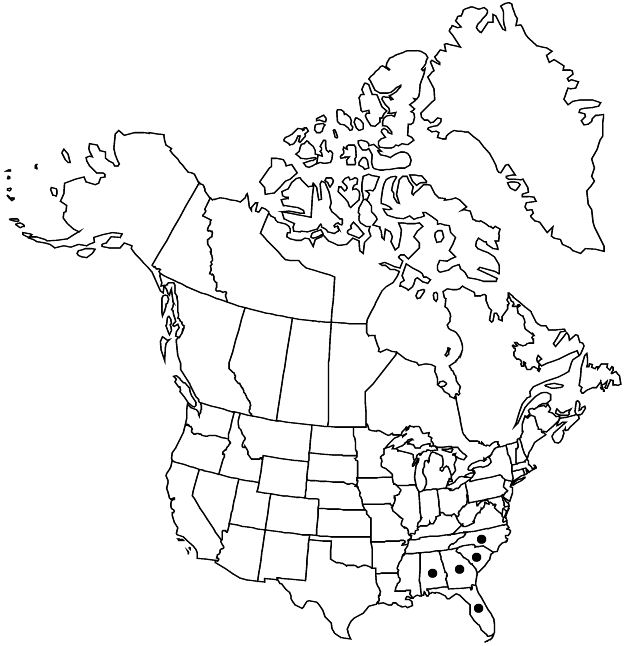Crataegus segnis
Biltmore Bot. Stud. 1: 32. 1901.
Shrubs or trees, 40–70 dm. Stems: twigs ± flexuous, new growth pubescent, 1-year old dark brown (partly covered with abraded cutin), older pale to mid gray; thorns on twigs absent or numerous, straight, 1-year old purple-brown, older gray, slender, 1.5–2.5 cm. Leaves: petiole slender, length 30–45% blade, pubescent, sessile-glandular; blade broadly elliptic or oblong to obovate, 2–3.5 cm, thin, base ± abruptly narrowed, lobes 0, sometimes with only a series of 1–3 subterminal apiculi per side, sinuses lacking or extremely shallow, margins crenate-serrate, teeth gland-tipped, veins 3–5 per side (except smaller leaves), apex subacute to acute, often ± cuspidate, abaxial surface glabrate young, adaxial sparsely hairy young, especially on midvein, glabrescent. Inflorescences 1–5-flowered; branches finely pubescent to pilose; bracteoles caducous, narrowly oblong, margins glandular. Flowers 15–20(–25) mm diam.; hypanthium sparsely pilose; sepals triangular, margins irregularly, strongly glandular-serrate, abaxially glabrous; stamens 20, anthers pale purple; styles 3–5. Pomes orange flushed red to red, suborbicular, 10–15 mm diam., glabrous; sepals recurved; pyrenes 3–5.
Phenology: Flowering Apr; fruiting Sep–Oct.
Habitat: Brush
Elevation: 20–150 m
Distribution

Ala., Fla., Ga., N.C., S.C.
Discussion
Crataegus segnis is broadly treated to include all members of the C. visenda group with leaves that lack lobes or are terminally apiculate. The species has larger leaves than C. visenda. Suborbiculate leaves are reported on extension shoots.
Selected References
None.